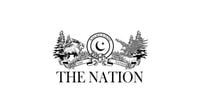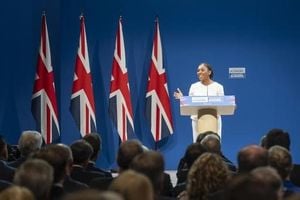On September 17, 2025, Saudi Arabia and Pakistan took an audacious step in the Middle East’s evolving security landscape, signing a mutual defense pact that declared, in no uncertain terms, “any aggression against either country shall be considered an aggression against both.” The ink was barely dry before speculation swirled—was this simply a formalization of decades-old ties, or the start of a new regional order? And, most provocatively, did the pact include a Pakistani nuclear umbrella for the kingdom?
Pakistan’s Defense Minister Khawaja Mohammad Asif initially fanned those flames, suggesting the pact included nuclear assurances for Saudi Arabia. He quickly walked back the statement, but ambiguity lingered, leaving the world guessing whether Islamabad had extended its nuclear deterrent to Riyadh. As of early October 2025, that question remains unanswered, with both capitals maintaining a strategic silence that only deepens the intrigue.
According to The Bulletin, this defense pact arrives at a time when the region is rife with tension and uncertainty. Just weeks before the agreement, Israel launched missile strikes in Qatar targeting Hamas political leaders, a move that deeply rattled Gulf monarchies who had long considered themselves insulated from such direct conflict. Iran’s subsequent retaliation for US attacks on its nuclear facilities—striking the US Al Udeid Air Base near Doha, albeit with little damage and advance warning to Washington—underscored how quickly regional hostilities can spill across borders. And in a further twist, two Houthi ballistic missiles aimed at Israel broke apart over Saudi territory, unintentionally putting the kingdom’s security at risk.
All these events, observers say, have contributed to a growing sense among Gulf leaders that traditional US security guarantees are no longer ironclad. Saudi Crown Prince Mohammed bin Salman, whose Vision 2030 project depends on projecting stability and attracting foreign investment, has become increasingly determined to diversify the kingdom’s security partnerships. China, now Riyadh’s main trading partner, successfully brokered the 2023 Iranian-Saudi détente and has become an indispensable player in regional diplomacy. Still, the limitations of such arrangements were exposed when Tehran retaliated in Qatar, showing that even the best-laid diplomatic plans can unravel in the face of shifting alliances and existential threats.
As The Bulletin notes, the timing of the Saudi-Pakistani pact is a message to Washington and, perhaps more importantly, to Israel and Iran. While the agreement is rooted in decades of military and economic cooperation—dating back to formal defense agreements in 1967, the deployment of thousands of Pakistani troops to the kingdom in the 1970s, and King Fahd’s 1980 declaration that Saudi security was tied to Pakistan’s—the new pact signals a more assertive stance. According to Najm us Saqib, a former Pakistani ambassador writing in Dawn, “The deal represents a strategic shift in its purest form—a potential watershed moment with ramifications that could alter the balance of power in the Middle East and beyond.”
This is no mere extension of past ties. The current climate, rife with crises and shifting allegiances, has injected a new urgency. Saqib argues that the pact must be seen as a strategic recalibration, akin to America’s pivot to Asia-Pacific, Britain’s post-Brexit realignment, or Germany’s energy transformation after Russia’s invasion of Ukraine. For Saudi Arabia, the need for reliable partners has grown acute as the Arab Spring’s aftermath, the Gaza conflict, and US unpredictability have all eroded confidence in traditional security arrangements. For Pakistan, the pact offers a strategic anchor and economic lifeline at a time of persistent financial and security challenges.
Indeed, the relationship has always been symbiotic. Riyadh has provided Islamabad with vital economic support, including an $11-billion bailout in 2023 and fresh investments in oil, mining, and solar projects. Pakistan, in turn, has supplied military expertise and, at times, boots on the ground—even if both sides have sometimes diverged on regional issues, such as Pakistan’s neutrality during the Yemen war or Saudi Arabia’s careful balancing of ties with India. Yet, as Saqib points out, “calling this new agreement a mere continuation of foreign policy would be an understatement.”
But what of the nuclear question? Islamabad takes great pride in being the first Muslim nation to develop nuclear weapons, often referring to its arsenal as the “Islamic bomb.” Saudi Arabia is widely believed to have helped finance Pakistan’s nuclear program, and speculation about nuclear sharing has swirled for decades. After India’s first nuclear test in 1974, Pakistan accelerated its own program, reportedly with Saudi grants and oil supplies. The possibility that Pakistan might extend its nuclear deterrent to Saudi Arabia has long worried Washington and other capitals.
Still, as The Bulletin cautions, Pakistan’s nuclear arsenal—estimated at 170 warheads—is aimed squarely at India, not Iran or Israel. Extending a nuclear umbrella to Saudi Arabia would risk severe international backlash, including US sanctions that could cripple Pakistan’s already fragile economy. “Transferring a portion of its nuclear stockpile to the Saudis would aggravate Pakistan’s strategic dilemma instead of alleviating it,” the publication notes. The specter of a regional arms race, or even a direct confrontation with Iran, looms large.
For now, the pact appears to be more symbolic than operational—a powerful signal of solidarity and mutual support, rather than a NATO-style commitment to automatic military intervention. “The pact is a classic example of strong strategic posturing,” writes Saqib. “It signals a fundamental change in the long-term direction and core approach of both states.” For Pakistan, it’s a high-risk, high-reward strategy that could entangle it in conflicts beyond its borders or provoke destabilizing reactions from rivals. For Saudi Arabia, it’s a bold move to diversify its security options as it seeks to secure its economic transformation and regional influence.
The pact’s announcement has already prompted adversaries and allies alike to reconsider their own positions. Israel and India, both wary of a united Saudi-Pakistani front, may feel compelled to strengthen their own alliances. Iran’s response has been notably restrained, perhaps reflecting its own complex calculations in a region where yesterday’s adversaries can become today’s partners.
Ultimately, the Saudi-Pakistani defense pact is less about the specifics of military cooperation and more about the message it sends: the era of unquestioned US dominance in the Gulf is waning, and regional powers are increasingly hedging their bets. As The Bulletin concludes, “In an evolving multipolar environment, countries are increasingly hedging through a diversification of partnerships. Israel’s growing hegemony and its lack of accountability are accelerating this behavior in the Middle East at large, as demonstrated by the Saudi-Pakistani defense pact.”
Whether this new alliance will bring greater security or new dangers remains to be seen. What is clear is that the sands of the Middle East are shifting—and Saudi Arabia and Pakistan are determined not to be left behind.




